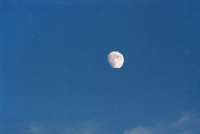|
|
 |
|
|
|
 |
| |
|
|
 |
Weather
Basics |
Short range forecasting by the Sun, Moon, rainbows, clouds, sky etc.
Several weatherlores are drawn from obsrevations of natural phenomena like the color of the sky, rings around the moon and animal behavior. Farmers watched cloud movement and the sky colour to know when to sow and reap. Martiners noted wind shifts and watched wave motions for signs of change. But most of the cases only those sayings that foretell daily change, usually accompany sky appearance, cloud movement or wind change, have any hope of success.
|
|
|
|
|
 |
|
Let’s take a look at some very-very old lore in connection with the Sun, Moon, rainbows, clouds etc., whith short explanations why some of them actually do work.
|
 |
 |
|
1. Dawn in the Alps
source: www.edenpics.com
|
|
 |
Sky - "Red Sky at night, sailor's delight. Red sky in the morning, sailor take warning."
When the western sky is especially clear, there is often a red sunset. That's because as the sun sets, its light shines through much more of the lower atmosphere, which contains dust, salt, smoke and pollution. These particles scatter away some of the shorter wavelengths of light (the violets and blues), leaving only the longer wavelengths (the oranges and reds.) If an area of high air pressure is present, the air sinks. This sinking air holds air contaminants near the earth, making the sunset even redder than usual. This would be the “red sky at night.”
|
In the middle latitudes of the northern hemisphere, weather systems most often approach from the west. Since high pressure generally brings fair weather, this type of red sky at sunset would indicate that clear weather is approaching, which would "delight" a sailor. If the sky is red in the eastern morning sky for the same reasons as above, then the high pressure region has most likely already passed from west to the east, and an area of low pressure may follow. Low pressure usually brings clouds, rain or storms, a warning for sailors.
|
Halo - "Halo around the sun or moon, rain or snow soon."
In many cases this may be true. The halo around the sun or moon is a layer of cirrus clouds made of ice crystals. These ice crystals act as tiny prisms, forming a white or sometimes colorful halo around the sun or moon. This cirro-stratus cloud typically indicates an approaching warm front and associated with a low pressure system. Rain or snow will not always follow, but there is a higher probability of it after a halo is seen, and the brighter the circle, the greater the probability.
2. Halo around the Sun
© Mats Mattsson http://home.swipnet.se/matsm shown with permission.
|
 |
|
 |
 |
|
3. source: http://24.77.76.160/index.html
|
|
 |
Moon - "If the moon’s face is red, of water she speaks."
This saying of the Zuni Indians of the Southwest is very accurate. The red color is due to the presence of dust being pushed ahead of a low pressure front bringing in moisture.
|
 |
 |
|
4. source: http://24.77.76.160/index.html
|
|
 |
Moon - "Clear moon, frost soon."
If the atmosphere is clear, the surface of the earth will cool rapidly as heat is radiated away at night. There is no "blanket" of clouds to keep the heat that the ground absorbed during the day from radiating back up into space. If the temperature is low enough on these clear nights and there's no wind, frost may form.
|
Rainbow - "Rainbow in the morning gives you fair warning."
In the morning, when the sun is in the east, the shower and its rainbow are in the west. As the weather in the mid-latitudes of the northern hemisphere moves mostly from west to east, rainbows in the morning to the west indicates approaching rain, while a rainbow at sunset indicates that the rain is leaving and fair weather is on the way.
|
 |
 |
 |
|
5. source: http://24.77.76.160/index.html
|
|
|
Stars - "When the stars begin to huddle, the earth will soon become a puddle."
When clouds increase, whole areas of stars may be hidden by clouds with groups of stars, still in the clear sky, seem to huddle together. The clouds are increasing, so the chance of rain is increasing too.
|
 |
 |
|
6. source: freestockphotos.com
|
|
 |
Clouds – "The higher the clouds, the better the weather".
Higher clouds indicate both dryness of air and higher atmospheric pressure. Both these qualities are present with fair weather.
Smoke – „When smoke descends, good weather ends”.
The instability of pre-storm pressures and humidity keeps smoke from chimneys or bonfires from rising quickly, finally to curl downward in the face of a storm wind.
|
Compiled by Vera Schlanger - Hungarian Meteorological Service
Scientific reviewing: Dr. Ildikó Dobi Wantuch / Dr. Elena Kalmár - Hungarian Meteorological Service, Budapest
Last updated 2003-12-09
More about weather proverbs from:
http://www.wxdude.com/proverb.html
http://www.stalkingthewild.com/weather.htm
http://www.meds-sdmm.dfo-mpo.gc.ca/cmos/weatherlore.html
http://vathena.arc.nasa.gov/curric/weather/hsweathr/solutions.html
http://www.shoal.net.au/~seabreeze/weather.html
http://members.aol.com/Accustiver/wxworld_folk.html |
|
 |
|









